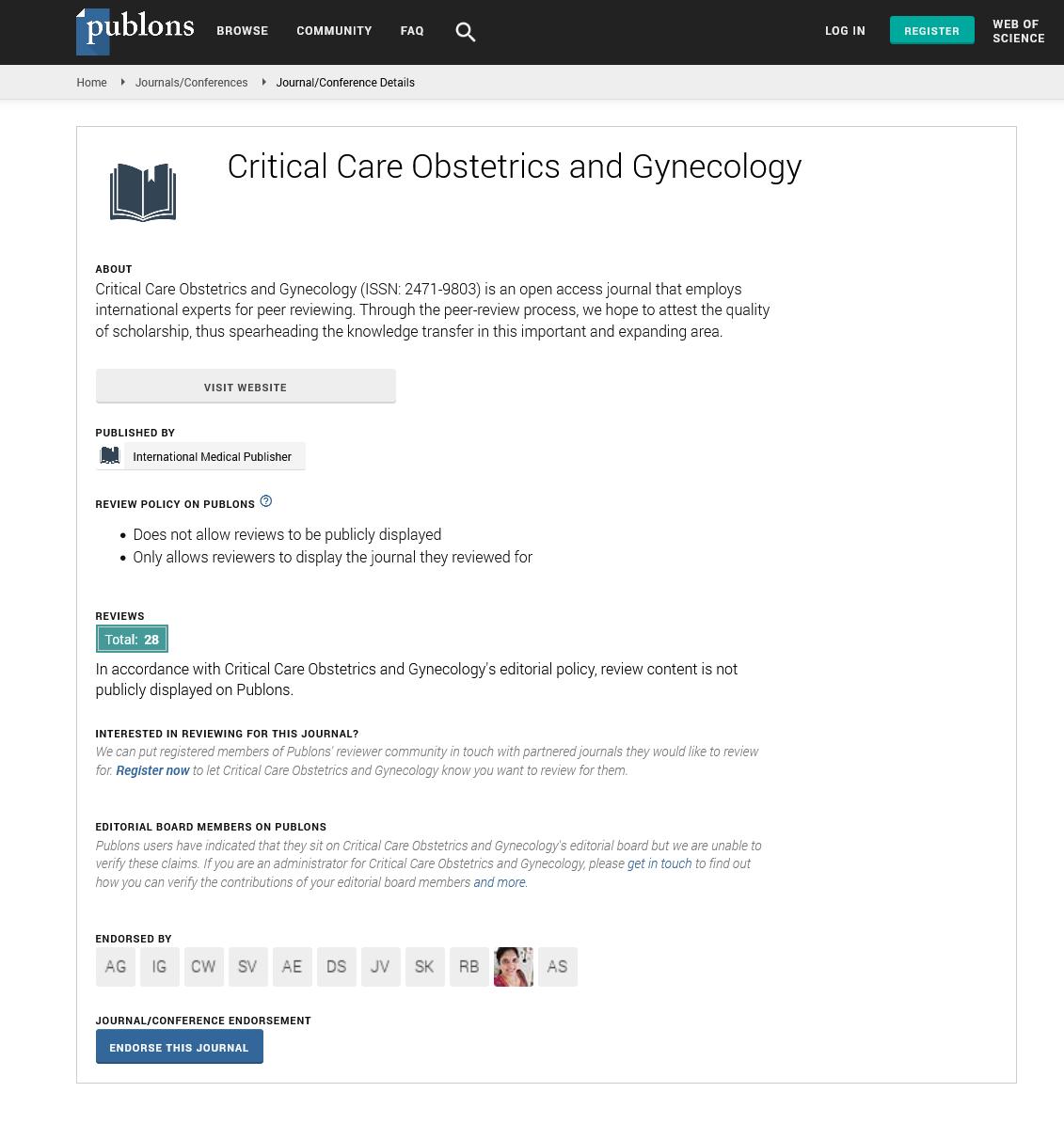Abstract
Evaluation of Postpartum Blood Loss After Misoprostol-Induced and Oxytocin with Foley's Catheter-Induced Labour: A Comparative Study
Background: Among the reported adverse effects of labor induction, little has been documented about postpartum bleeding. In our population where anemia is a common problem, any significant amount of blood loss beyond what the individual may be able to tolerate may compromise hemodynamic status resulting in additional therapy, with increased healthcare costs. The best agent and method for the induction of labor remains uncertain. Objective: To evaluate and compare postpartum vaginal blood loss and efficacy of the combination of Foley's bulb and oxytocin with vaginal misoprostol alone for labor induction. Materials and Methods: A total of 200 pregnant women were randomized into two groups of 100 each for misoprostol (Group M-50 µgram intravaginal) or Foley's catheter with oxytocin (Group FO) as methods of induction. Blood loss was measured using a plastic collection bag and weighing of the pads up to 6 hours postpartum. Pre- and post-delivery hemoglobin (Hb) and hematocrit (HCT) were measured and differences assessed and analyzed. The main outcomes measured were the success of induction, induction-delivery interval, postpartum blood loss, and difference between pre- and post-delivery Hb and HCT levels. The analysis was done with IBM SPSS version 24.0 for windows. Results: Age, parity, gestational age, episiotomy, and perineal tears were comparable in both groups. The mean blood loss in group M (60.52 ± 54.68 g) was significantly higher than group FO (36.94 ± 27.79 g) (p=0.00). The differences between mean pre-delivery Hb and HCT levels (12.23 ± 1.32 g/dl; 38.18 ± 3.01% and 12.35 ± 1.31 g/dl; 38.25 ± 3.31% in group M and group FO respectively) and post-delivery Hb and HCT (10.53 ± 1.45 g/dl; 34.55 ± 4.22% and 10.45 ± 1.32 g/dl; 34.58 ± 4.15% in respective groups) were comparable between both groups. This difference was statistically insignificant (p>0.05). Whereas, within each group, pre and post-delivery Hb and HCT level differences were statistically highly significant (p=0.001). A mild positive correlation between postpartum blood loss and initial Bishop scores and induction delivery interval was seen in group FO as compared to no such correlation in group M. Induction to the delivery interval was shorter in group FO (11.43 ± 5.25 hours vs 12.49 ± 5.62 hours) (p=0.169). Conclusion: Induction with Foley's catheter with sequential use of oxytocin was found to be more efficacious as compared to intravaginal misoprostol for labor induction
Author(s):
Neha Garg and Vanitha VG
Abstract | Full-Text | PDF
Share this

Google scholar citation report
Citations : 148
Critical Care Obstetrics and Gynecology received 148 citations as per google scholar report
Critical Care Obstetrics and Gynecology peer review process verified at publons
Abstracted/Indexed in
- Google Scholar
- China National Knowledge Infrastructure (CNKI)
- WorldCat
- Publons
- Geneva Foundation for Medical Education and Research
- Secret Search Engine Labs
Open Access Journals
- Aquaculture & Veterinary Science
- Chemistry & Chemical Sciences
- Clinical Sciences
- Engineering
- General Science
- Genetics & Molecular Biology
- Health Care & Nursing
- Immunology & Microbiology
- Materials Science
- Mathematics & Physics
- Medical Sciences
- Neurology & Psychiatry
- Oncology & Cancer Science
- Pharmaceutical Sciences


